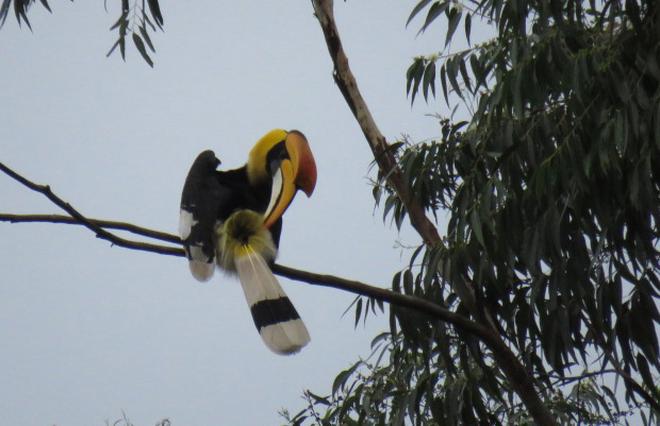About 275 bird species, including two critically endangered, four vulnerable ones and two endangered species, were counted during the bird survey at Corbett Tiger Reserve in Nainital. The survey, conducted between June 20 and 23 by a 62-member team consisting of ornithologists, conservationists, volunteers from World Wide Fund (WWF) India, Tiger Conservation Foundation and Village Volunteer Protection Force, covering overall 540 km of 135 forest trails provided insights into the diverse bird species inhabiting at Corbett Tiger Reserve.
As per the report, two species, namely white-rumped vulture and red-headed vulture, considered critically endangered by the International Union for Conservation of Nature (IUCN) list, have been documented in the survey, which covered the vast range of landscape in the reserve, including grassland, dense forest, rivers and hilly terrains. Two endangered species — Pallas’s fish-eagle, Egyptian vulture were also counted by the researchers in the survey. The scientific names of Pallas’s fish-eagle and Egyptian vulture are halieetus leucoryphus and neophron percnopterus respectively. Four vulnerable bird species — great hornbill, great slaty woodpecker, grey-crowned prinia and river tern — have also been counted in the survey.

About 10 near-threatened bird species — river lapwing, red-breasted parakeet, oriental darter, lesser fish-eagle, Himalayan griffon, great thick-knee, gray-headed fish-eagle, black-necked stork, Asian woolley-necked stork and Alexandrine parakeet — have also been found at the reserve. About 256 species documented in the survey are considered to be of least concern by the IUCN. The report is compiled by Oriental Trials, an NGO working for conservation of wildlife. The data include both resident species, which make the reserve their year-round home, and non-resident species that seek refuge during their arduous journeys.
Also read | 5% of birds in India are endemic, reveals Zoological Survey of India publication
Two methods of recording
The survey, conducted using two methods of recording the bird species — Point Count Method and Trail Monitoring Count Method — aims to give a holistic approach and protect all parts of the landscape which are extensively used by mega-fauna. The study was held to get a better understanding of birds and their associated habitats to understand the complexity of avian species and other species population in the tiger reserve which holds the unique distinction of having the highest density of tigers anywhere in the world. The reserve also happens to be one of the last surviving stretches of untouched sub-Himalayan wilderness.







